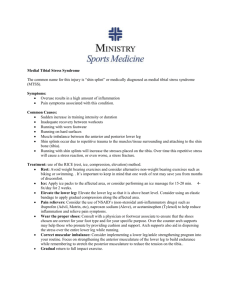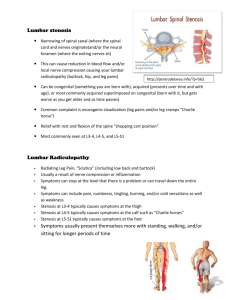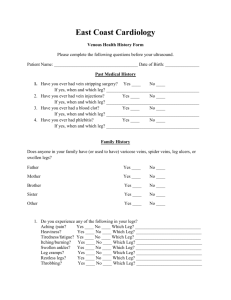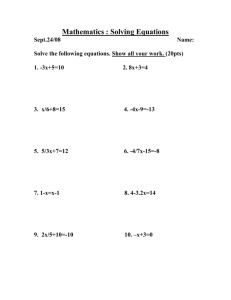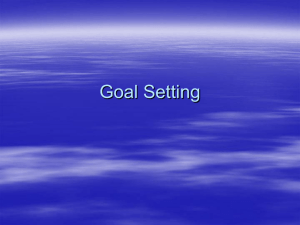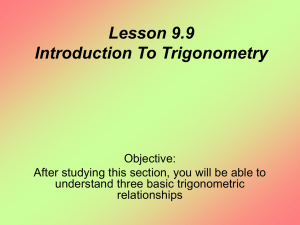maths1_5C_artificial leg - CED-Mxteachers-news-site
advertisement
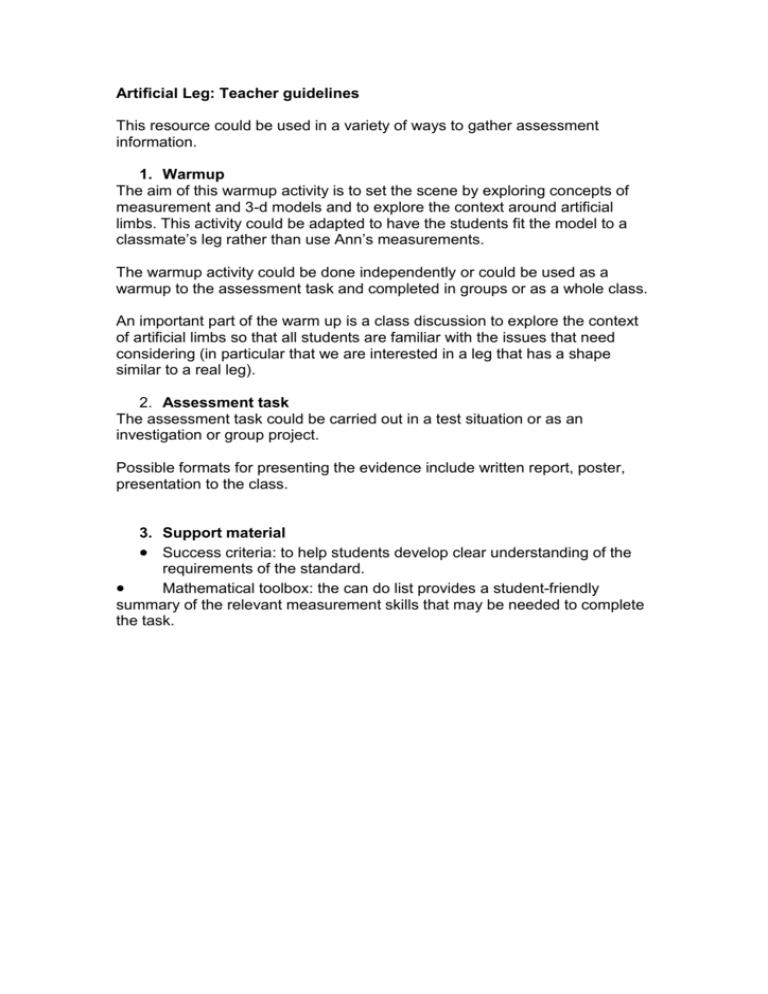
Artificial Leg: Teacher guidelines This resource could be used in a variety of ways to gather assessment information. 1. Warmup The aim of this warmup activity is to set the scene by exploring concepts of measurement and 3-d models and to explore the context around artificial limbs. This activity could be adapted to have the students fit the model to a classmate’s leg rather than use Ann’s measurements. The warmup activity could be done independently or could be used as a warmup to the assessment task and completed in groups or as a whole class. An important part of the warm up is a class discussion to explore the context of artificial limbs so that all students are familiar with the issues that need considering (in particular that we are interested in a leg that has a shape similar to a real leg). 2. Assessment task The assessment task could be carried out in a test situation or as an investigation or group project. Possible formats for presenting the evidence include written report, poster, presentation to the class. 3. Support material Success criteria: to help students develop clear understanding of the requirements of the standard. Mathematical toolbox: the can do list provides a student-friendly summary of the relevant measurement skills that may be needed to complete the task. Tool Box: Level One Measurement This can do list provides a summary of the relevant measurement skills that may be needed to complete the assessment task for achievement standard 90130. Can I? Convert between metric units for length: mm,cm,m,km Convert between metric units for area: mm2 ,cm 2,m2 ,km2 Convert between metric units for volume: mm3 ,cm 3,m3 ,km3 hectares, Convert between metric units for capacity: mm3 ,cm 3, L mL Find the perimeters and areas of polygons. Find the perimeters and areas of circles Find the perimeters and areas of composite shapes Calculate volumes of prisms Calculate volumes of pyramids and cones Calculate volumes of spheres Calculate volumes of composite shapes Deduce and use formulae to find the perimeters and areas of polygons, Deduce and use formulae to find volumes of prisms You need to use these skills in solving relevant measurement problems. Success Criteria: Mathematics and Statistics 91030 1.5 Success Criteria for All Students Solve measurement problems that may involve calculating: o Length, perimeter, circumference o Area (including surface area) of polygons or composite shapes o Volumes, chosen from – prisms (more difficult than cuboid), – pyramids, – cones, – spheres. Demonstrate knowledge of measurement concepts and terms by correctly using o metric units o units appropriate for the context. Success Criteria for Achievement Success Criteria for Achievement with Merit To demonstrate that you can apply measurement to solving problems, you will Decide how you are going to solve the task and Communicate your solution process clearly by o identifying what is being calculated, o using measurement words correctly and o using correct names of shapes and solids. To demonstrate that you can apply measurement, using relational thinking, in solving problems, you will Form and use a model to solve the task and Clearly communicate thinking by o showing the logical sequence of steps you used and o connecting your methods and solutions to the context. Success Criteria for Achievement with Excellence To demonstrate that you can apply measurement, using extended abstract thinking in solving problems, you will Form a relevant generalisation of the solution or communicating mathematical insight and Clearly communicate thinking by o showing the logical sequence of steps you used and o connecting your methods and solutions to the context. Final grades will be decided using professional judgement based on a holistic examination of the evidence provided against the criteria in the Achievement Standard. Warm-up: Ann’s leg Background: Biodesigns make artificial legs for amputees. They form a model that looks like a person’s leg. They use the model to estimate the amount of material needed. Two different materials are used, one type for the inside of the leg and one type for the outside (the skin). Ann has an artificial leg made. Biodesigns use a simple model based on one cylinder. Biodesigns measured Ann’s leg Leg length: 86cm Width at widest part: 20cm Your task is to: Calculate the amount of material needed to fill the inside of the artificial leg. Calculate the amount of material needed for the skin. Discussion: What are some of the problems with this model of an artificial leg? What things should you consider to make a model that is useful and “looks” like a leg? Do all the surfaces of the model need skin? Do you understand the success criteria for the achievement standard? Assessment Task: Artificial leg Background: Biodesigns makes artificial legs for amputees. They form a model that looks like a person’s leg. They use the model to estimate the amount of material needed. Two different materials are used, one type for the inside of the leg and one type for the outside (the skin). Biodesigns first used a simple model based on one cylinder: Biodesigns want to improve the model so that it can bend. They consider other models including a model made from 4 cylinders, such as: Your task is to calculate the amount of the material needed for a leg that bends. Use o the 4 cylinder model above or o a better model of your own design. Calculate the amount of material needed for a leg for someone of your height and build, by o calculating the amount of material needed to fill the inside of the model and o calculating the amount of material needed for the skin for the model. Provide a formula to calculate the total amount of material needed for the model of a leg for someone of any height and build. You will be assessed on the depth of your mathematical understanding as shown by the model you use and your solution process. It is important you communicate your solution process clearly and relate your findings to the context. Assessment schedule: Mathematics and Statistics 91030 1.5 Artificial leg Evidence/Judgements for Achievement Apply measurement in solving problems. Students communicate solution process by o identifying what is being calculated, o using measurement words correctly and o using correct names of shapes and solids select and use at least 3 out of 7 of these methods in solving relevant problems: surface area of o cylinder, o sphere, o cone, volume of o cylinder, o sphere, o cone, Evidence/Judgements for Achievement with Merit Apply measurement, using relational thinking, in solving problems. Evidence/Judgements for Achievement with Excellence Apply measurement, using extended abstract thinking, in solving problems. Students form a model; accept any model that is more ‘fit for purpose’ than a one-cylinder model find amount of the two materials needed for their model (do not penalise minor errors) and clearly communicate thinking by o showing the logical sequence of steps used and o connecting methods and solutions to the context. Students form a relevant generalisation by finding an expression for the total amount of material needed for any model of a leg for any dimensions. and clearly communicate thinking by o identifying variables used, o showing the logical sequence of steps used, and o connecting methods and solutions to the context. or communicating mathematical insight use appropriate metric units. Final grades will be decided using professional judgement based on a holistic examination of the evidence provided against the criteria in the Achievement Standard.

